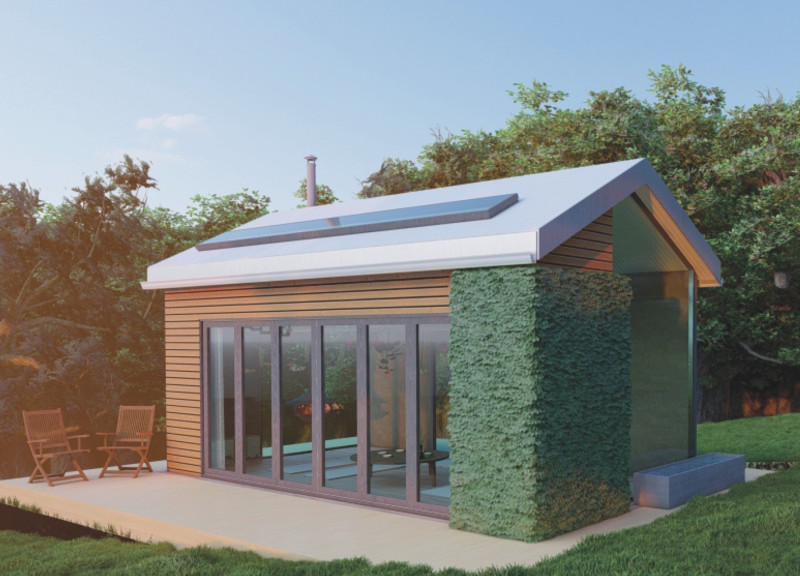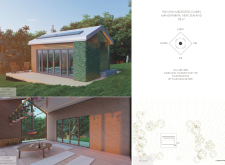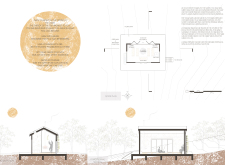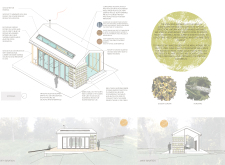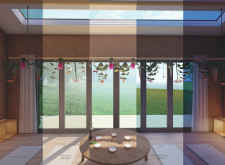5 key facts about this project
The Tiny Kiwi Meditation Cabin is located in Mangatarata, New Zealand. It serves as a space for meditation and reflection, designed to connect its users with nature. The concept centers on the four classical elements—water, earth, air, and fire. Each element plays a role in promoting mindfulness and a deeper awareness of the surroundings. The cabin encourages users to engage with their environment, creating a sanctuary for personal growth and relaxation.
Structural Framework
Wood stud construction forms the backbone of the cabin, allowing for efficient sourcing and easy transport of materials. The exterior features corrugated aluminum and local New Zealand wood planks. This combination provides durability while helping the structure blend with its natural setting. These materials not only resist the elements but also support the sustainable goals of the design.
Interior Experience
Inside, a green wall brings life to the space with a variety of plant species. This feature enhances visual appeal and promotes a healthy indoor environment. Flexible space is central to the design, accommodating five yoga mats for varied arrangements. Low-profile storage serves as seating, making efficient use of the limited area. This versatility ensures the cabin can meet diverse needs and activities.
Natural Elements
A rainwater collection system is integrated to support the indoor plants, providing a direct link to the water element. A central Chabudai table is designed for multiple uses, including flower essence processing. Positioned to maximize natural light, it enhances the daily experience. Additionally, a small fireplace offers warmth and invites evening gatherings, creating a calm atmosphere for reflection.
Connection to Place
The gable pitch roof effectively manages wind, adding to the cabin's stability against weather. Wall spaces are designated for local plants like Golden Corokia and Koromiko, reinforcing a connection to the region's ecology. The walls are finished with mud plaster, which fosters a connection to the earth. This touch aligns with the overarching theme of sustainability in design.
The cabin stands as a thoughtful space that encourages contemplation and interaction with nature. Each design element works together to create an environment conducive to mindfulness and connection.


